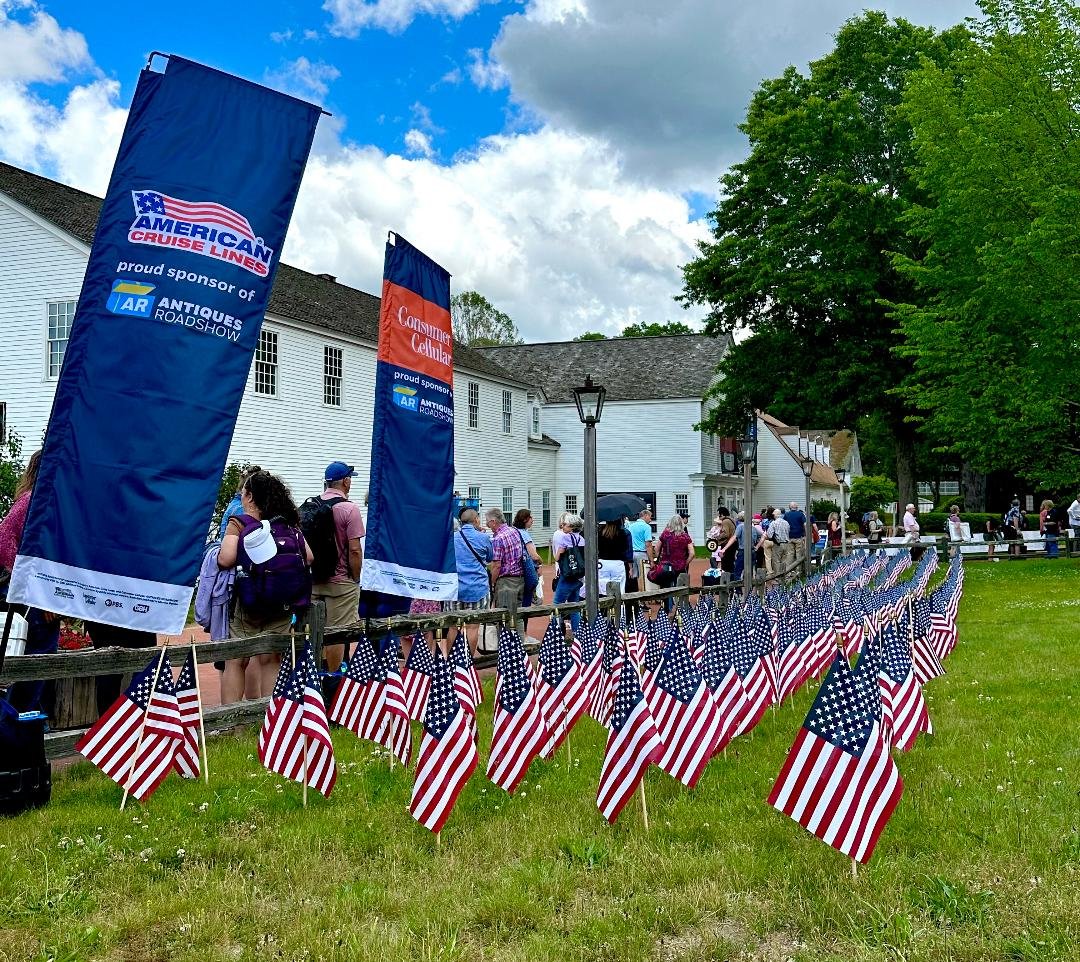My Day at the Antiques Roadshow
Amid the chaos of our great political and cultural divides, there is still one event that manages to unite people with the Ambien of sweet nostalgia, the calming embrace of family heritage and the quiet hope of undiscovered treasure: PBS’s Antiques Roadshow, an American fixture since 1997.
Sometimes it takes a village — in this case, Old Sturbridge Village in Sturbridge, Mass., just over the Connecticut border — to bring disparate people together in search of shared values, even if it’s only an appraisal of a faded Topps baseball card, a dented Civil War sword or Aunt Tulip’s butt-ugly vase.
When I learned that one of Roadshow’s five 2023 touring stops would be within driving distance from my New Haven home, I once again applied for free, online-only tickets. A previous try in 2021, when the tour came to Middletown’s Wadsworth Mansion at Long Hill Estate, was a bust. But in early spring I became the recipient of two tickets that I prized as if they were goldenly given by Willy Wonka.
My personal treasure was a triptych of sketches I had bought at the estate of two Connecticut friends who died in the early 2000s: writer Markland Taylor and his longtime partner, producer/agent Hartney Arthur of Southbury. The separate drawings of actor Lionel Barrymore, director Ernst Lubitsch and Greta Garbo, all signed by each, were by actor Roland Young, whose career stretched from silent films to early television. He is best known for the title role in the 1937 film Topper (which earned him his only Oscar nomination) and as Uncle Willie in 1940’s The Philadelphia Story starring Katharine Hepburn.
When I arrive at the tour site on a sunny June day, the parking lots are packed and the entry line for my designated time is Disneyland-epic. But people’s mood, just as you would glean from the television show, is sweetly congenial, with folks from all walks of life happily showing off their items and sharing their stories culled from family attics and flea markets.
The long entry line moves quickly, only to be joined by a second which leads to the “triage” tent. After that there is another wait at the tent of whichever kind of item you have: jewelry, paintings, pottery, glassware. More than 20 category areas are manned by more than 60 appraisers who started early that morning and would continue until the last item is seen at the end of the day.
Most people bring easy-to-handle items, but others transport larger pieces by other means: rolling water coolers, red wagons, shopping carts, even a baby carriage for one man with a futuristic, blue-enamel, 1940s standing radio globe. “And it still works,” he says.
An older gentleman lugs a yellow surfboard from his endless summers, still looking for that perfect wave (or appraisal); a couple dollies a six-foot store display of an early iPhone model, perhaps …|CONTINUED|



